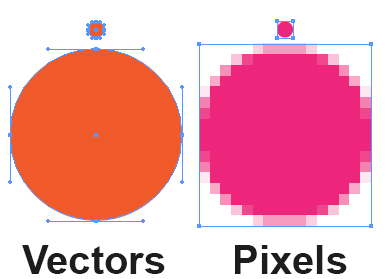
When people talk about resumes, they talk more about keywords, bots and ATS than experience, skills and accomplishments.
And that’s a shame.
Because, they’re picking at a resume buffet that can’t exist if you haven’t even built your foundation resume.
Your what?
Foundation Resume
The foundation resume is exactly what it sounds like.
It’s the base – the ‘load-bearing’ part of the pillar of your professional documentation.
This is the document that contains the entirety of your professional and/or relevant work experience.
It is NOT, however, the one you submit on an application, bring to an interview or send to a prospective employer.
You should build a foundation resume with the intent of keeping it updated, filed and ready at any moment to be used as a resume buffet you can pull from to create customized resumes targeted to specific opportunities you want to pursue.
Resume Buffet
I’ve called it The Big Kahuna and Kitchen Sink, but I’ve always preferred to think of the foundation resume as a Resume Buffet, of sorts.
Packed with appealing, juicy information – but not all of it should nor needs to be loaded onto your resume plate every time.
Why?
Because no matter how similar two jobs may be – there will be inherent differences you should take into consideration.
Keywords
Now, first off – keywords aren’t as mysterious as you may think (or as you may have been told).
They’re right there for you to see — the words or short phrases used to convey the requirements (skills, programs, education, etc.) for specific jobs.

And jobs with similar or even identical titles can have keyword differences that should not be overlooked.

Here’s a rough example – but go with me here …
Let’s say you’re searching for Graphic Design jobs. It’s likely you’ll find tons of keyword overlap when it comes to tools or experience or education. But, if the opportunity speaks more to print than digital design, you’ll want to show more vector-based than pixel-based experience.
Or, let’s say it’s a design job at a newspaper that also requires some copy skills. It’s still advertised as a Graphic Design opening, but there will be writing, editing and possibly research skills you’ll want to highlight for that one.
The same could be said for Graphic Design roles looking for animation skills.
Subtle differences – but important ones that a single resume being sliced three ways can’t be equally effective in each case.
Does this mean you won’t have keyword matches for editing or motion design in your resume if you’re a graphic designer?
Let’s make this one easy and say you do. Cool.
Where are they on that foundation resume? One position? Three?
Those are the important elements the hiring manager or recruiter is looking for. Don’t make them pick through part after part to find the piece they want.
The skills you have that fit the role are how you solve the prospective employer’s problem.
Your targeted resume shows them the solution by featuring the roles, accomplishments and skills that speak to their specific need.
Bots & ATS
There’s a lot of chatter about bots and ATS systems – terms often used interchangeably – but what are they?
Well, for starters they’re not the same thing.
Bots
For the most part – they don’t exist. At least not in the way some folks would have you believe.
There are people and businesses that want you to believe bots act as some sort of programmatic gatekeepers bent on locking you out of the job of your dreams – and advising that you’ll need to employ all sorts of deception and trickery to get around them.
It’s just not true.
They are not an electronic work warden.
The kind of bot that’s used for jobs is akin to a chatbot.
And, if you’ve ever begun a chat with a chatbot, you know how this works.
A sort of ‘if-then’ scenario begins with basic yes or no questions to take you in or out of the chat (no to a specific question – the chatbot can’t help you with your issue; yes, it can – that sort of thing).
What that might look like might be a question on an online job application that has a stated location requirement – something like, “Are you willing to relocate?”
If you say no, that would move your application out of consideration for that location-based role.
The same logic is used when you create filters on LinkedIn or Indeed or Amazon any other site. If you filter for remote roles, you won’t see those that have a geographic requirement. If you filter for title or seniority, you won’t see roles without the one(s) you chose. If you filter for products available for 1-day shipping, you won’t see the ones that take longer.
Which brings us to the ATS.
Yes, Applicant Tracking Systems exist and – pro tip – they’re also not the impenetrable walls they’re often purported to be.
So what are they?
An ATS is candidate management software, and it’s used to match opportunities. to applicants.
It’s designed to show matches.
It is not designed to block applicants.

So how do you match?
- Read the job description to understand what skills (relevant, functional) are needed.
- Read your functional resume and pull out the roles and associated highlights that align with those needs.
- You may find you have matches on some but not all jobs on your resume buffet.
- This is the basis of your targeted resume for this role.
- Determine your level of alignment.
- Along with having the skill or experience, the ATS will infer the level of experience by the number of returns it finds for it (like the way Google search returns work).
- CAUTION: Do not (like ever) stuff your resume with perceived word matches or try to add but ‘hide’ them in white text to try and rank higher. It doesn’t work that way (the system generally highlights the term matches for the user, so it’s super obvious when you do it, and it dilutes the verifiable experience you do have. So, stuffing = bad look. Don’t do it.
Back to the (resume) buffet
One of the most frequent questions I get asked is how to get someone to actually READ the resume they sent.
It’s why I encourage people to create and visit their resume buffet for every (yes, every) opportunity.
There is likely some detail, function, achievement, learning or benefit tucked into your personal work history relevant to this job that could easily be missed if:
- you’ve never created the foundation resume to begin with.
- you’re sending the same stale document out to every opening you see.
The results you achieve will be in direct proportion to the effort you apply.
Denis Waitley
———————–
👋I’m Gretchen
👉I am a career strategist and leadership development consultant on a mission to teach you to find what you love without losing yourself in the process.
🎯I create sane strategies that produce serious results.
=======================
Ways to work with me:
- Coaching:
- 1-Hour Coach
- RAM Fitness
- Consulting:
- Team Building
- Leadership Development
- Public Speaking
=======================
Connect with me:
